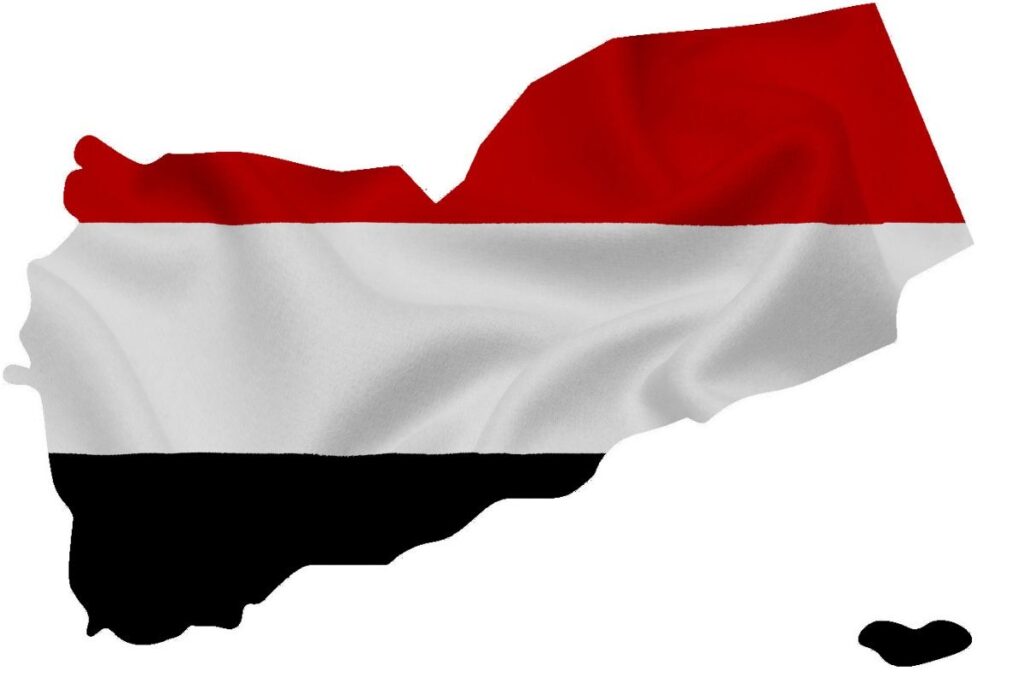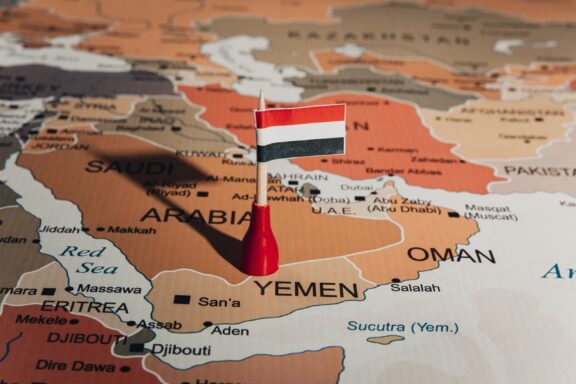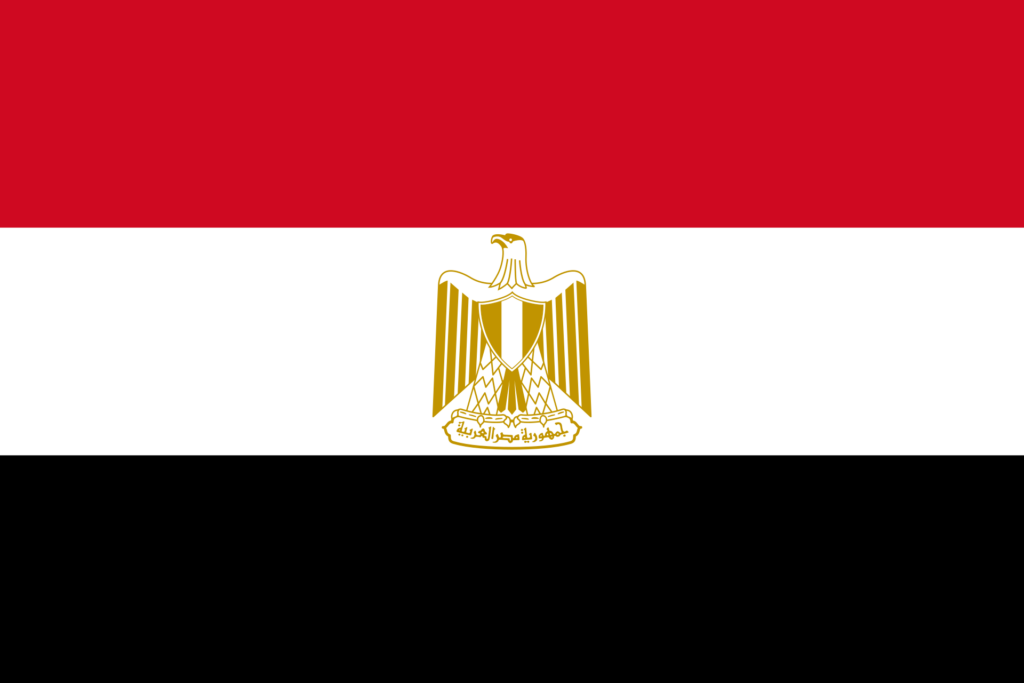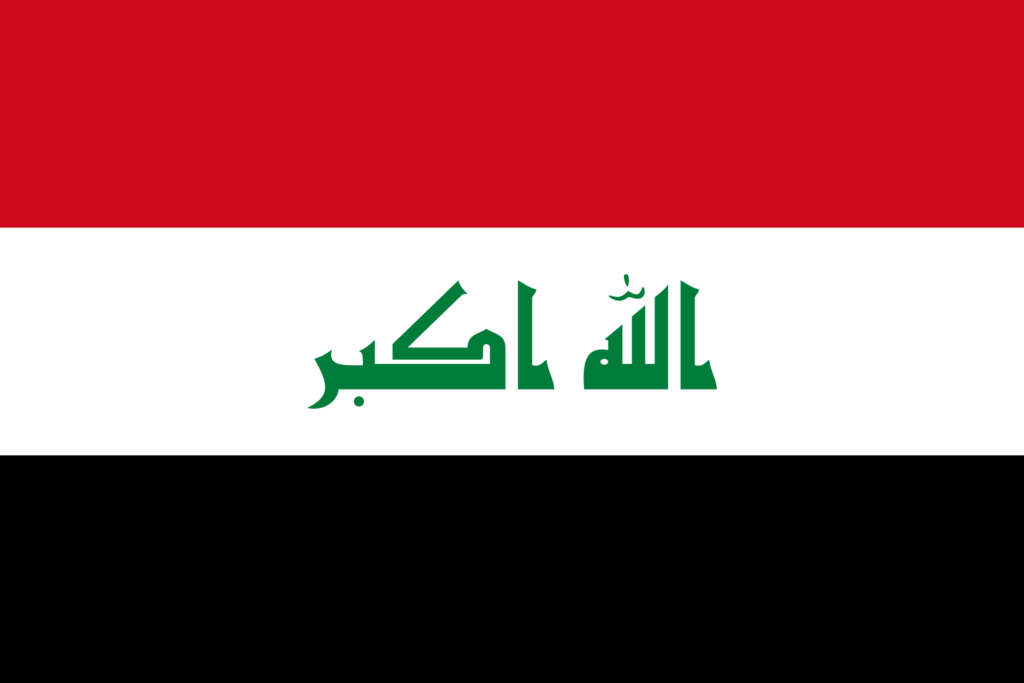The flag of Yemen stands as a vibrant emblem of the nation’s identity and its journey through time. It encapsulates the essence of Yemeni sovereignty and the collective aspirations of its people and guides the nation through periods of change and continuity, symbolizing Yemen’s enduring values and dynamic narrative.
Flag of Yemen

The Yemen flag showcases a striking tricolor design composed of horizontal stripes with significant meaning. Its structure is a compelling symbol of the country’s harmony, and the distinctiveness of its stripes conveys a narrative of Yemen’s past, present, and hopes for the future without delving into the specific symbolism of each color.
Flag of Yemen: Color Palette

Yemen Flag Emoji: 🇾🇪
The color palette of the Yemen flag, deeply intertwined with its Arabian Peninsula setting, is striking and symbolic, comprising three distinct hues emblematic of the nation’s rugged terrain and maritime borders.
These colors, infused with the essence of Yemen’s heritage, offer a window into the nation’s soul, blending its historical depth with the diverse influences of its geographical crossroads.
Through this exploration, we gain insights into how these hues weave together the narrative of Yemen’s storied past, dynamic present, and hopeful future.
Meaning of Each Color

Red: The red stripe at the top of Yemen’s flag symbolizes the blood of martyrs who struggled for the country’s independence and unity.
Red
This color has a deep historical significance, echoing the sacrifices of Yemenis in their quest for sovereignty and national cohesion. It reflects a common theme in many national flags, where red often stands for bravery, struggle, and the willingness to sacrifice for freedom.
White
The white band in the middle represents a bright future for Yemen. This color is universally associated with peace, purity, and optimism.
In the context of Yemen’s flag, white is a hopeful contrast to the nation’s turbulent past, symbolizing the country’s desire for peace and prosperity.
Black
The black stripe at the bottom represents Yemen’s dark past. This includes periods of foreign domination, internal strife, and challenges that the nation has faced over the centuries.
Black in vexillology often represents determination in the face of adversity, and Yemen’s flag serves as a reminder of the obstacles the nation has overcome.
Yemen Coat of Arms

Yemen’s Coat of Arms, adopted in 1990 amidst the unification of North and South Yemen, is a vibrant emblem of national pride and heritage. The following elements characterize it:
- Golden Eagle: The central figure symbolizes strength, majesty, and the soaring inclinations of the Yemeni people. The eagle’s presence underscores the nation’s sovereignty and resilience.
- Shield with Marib Dam: The shield on the eagle’s chest features the iconic Marib Dam, an emblem of Yemen’s rich history and its ancient engineering prowess, reflecting the country’s enduring legacy and cultural depth.
- Coffee Plant: Adjacent to the Marib Dam on the shield, the coffee plant pays tribute to Yemen’s historical significance in the global coffee trade, marking its contribution to world culture and economy.
- Seven Blue Wavy Stripes: These stripes likely symbolize Yemen’s ties to its surrounding waters and the life-giving essence of water in an otherwise arid landscape, representing sustenance and life.
- National Flags: Flanking the eagle are two Yemeni national flags, reinforcing the theme of unity and national identity, reflecting the bond and collective spirit of the Yemeni people.
- Scroll: In the talons of the eagle, a scroll bears the name of the country in Arabic, “Al-Jumhuriyyah Al-Yamaniyah” (The Yemeni Republic), solidifying the emblem’s official status and the nation’s unity under one name.
This Coat of Arms serves as a state symbol and a narrative tapestry, intertwining elements of Yemen’s geography, history, and cultural contributions into a cohesive and representative emblem.
Historical Evolution and the Meaning Behind Changes
The flag of Yemen is deeply rooted in the nation’s history and its path to unification. Before becoming one nation in 1990, North and South Yemen each had their own flags, which were influenced by the Arab Liberation colors symbolizing Arab unity and freedom.

The North’s flag featured the traditional horizontal stripes with a green star, while the South’s flag included a unique blue triangle with a red star, reflecting its socialist governance.
With the unification of the two regions, a new flag was conceived to symbolize the new Republic of Yemen, intentionally simplified to foster national unity.

This new flag maintained the Pan-Arab colors but omitted any additional symbols to avoid past political connotations. This choice reflected a desire to connect with the broader Arab world while marking a new chapter in Yemen’s history.
The evolution from distinct regional flags to a unified national emblem underscores the transformative journey of Yemen through division, conflict, and unity. It highlights the flag’s role as a state symbol and a narrative of resilience, hope, and shared identity within the Arab community.
Overall Symboli Meaning of the Flag

The flag of Yemen embodies the nation’s unity and collective aspirations. Stripping away the complexities and divisions of the past symbolizes a harmonious future.
This emblem represents the convergence of disparate regions and Yemen’s resilience and shared destiny. It stands as a beacon of hope, guiding the country towards peace and prosperity, encapsulating the spirit of a nation moving forward as one.
Similar Flags to the Flag of Yemen
The flag of Yemen shares similarities with the flags of several other Arab nations due to the common adoption of the Pan-Arab colors: red, white, and black:
Egypt

The flag of Egypt features a horizontal tricolor of red, white, and black stripes, emblematic of the country’s rich history, particularly the 1952 Revolution. The central figure, the Eagle of Saladin, symbolizes strength, sovereignty, and the nation’s Arab identity.
The colors each have deep meanings: red represents the struggle against colonization, white symbolizes purity and a new beginning, and black commemorates overcoming a dark past.
Iraq

The flag of Iraq also utilizes the Pan-Arab colors of red, white, and black, arranged in horizontal stripes. Unlike Egypt’s flag, Iraq’s current flag features the Takbir (“Allahu Akbar”) in green Kufic script, centered in the white stripe.
This addition, made in 1991, is a nod to the country’s Islamic heritage and was intended to underscore Iraq’s sovereignty and identity during a period of national significance.
Syria

Syria’s flag bears the same colors as those of Egypt and Iraq, arranged in horizontal stripes but with a distinct arrangement: two green stars on the white stripe.
These stars originally represented Syria and Egypt during the short-lived United Arab Republic union between 1958 and 1961.
Final Thoughts
With its deep-rooted symbolism, the flag of Yemen embodies its people’s resilience and unity, standing proudly among the global tapestry of flags. It is a constant reminder of the nation’s rich heritage and the collective aspirations for peace and prosperity.
Image Sources and Copyright Information
- Yemen Flag Flying with Cityscape in Background: © akramalrasny/Shutterstock
- Yemen Map with Flag Pin: © GR.Stocks/Shutterstock